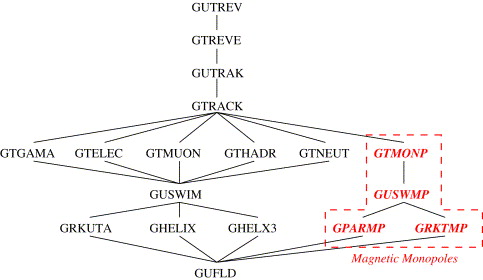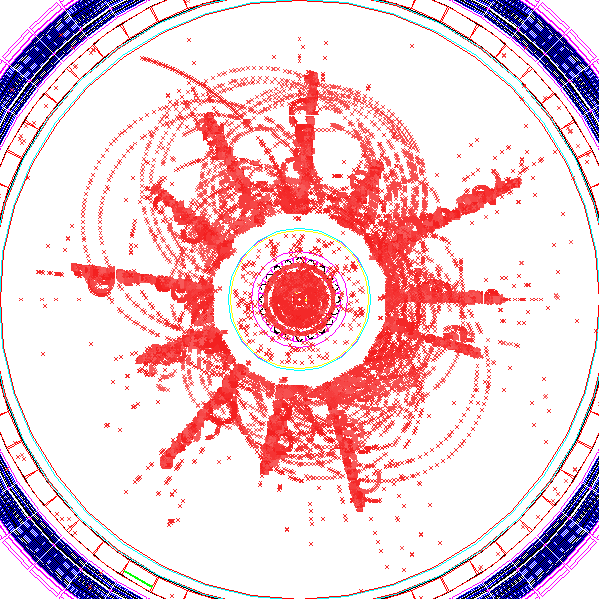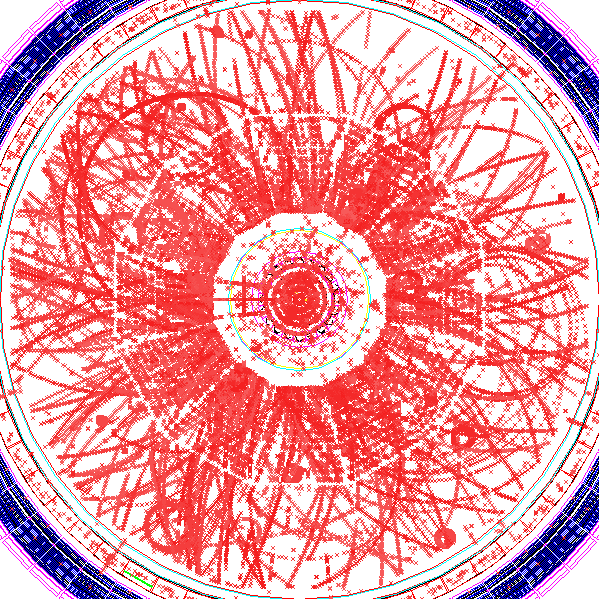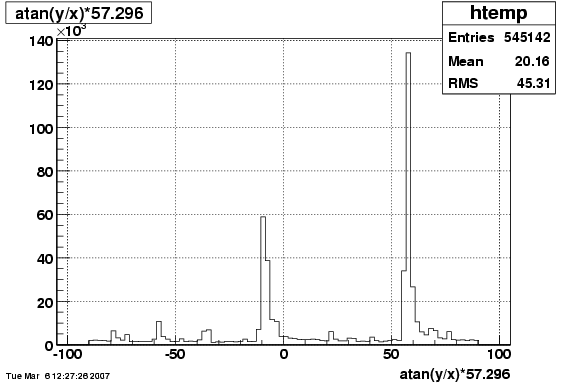- General information
- Data readiness
- Grid and Cloud
- Infrastructure
- Machine Learning
- Offline Software
- Production
- Test tree
The Magnetic Monopole in STAR
Updated on Wed, 2007-08-22 11:04. Originally created by potekhin on 2007-02-28 16:33.
Under:
Introduction
It is possible to simulate the production and propagation of the magnetic monopoles in the STAR experiment, using a few modification in the code base of GEANT 3.21, and in particular in our GEANT-derived application, the starsim. Our work is based on a few papers, including:
The flow of the GEANT code execution is illustrated by the following diagrams from the above publication:


First Results
As as demonstration of principle, we present here a few Starsim event display pictures. First, we propagate 12 magnetic monopoles of varying momenta, in the STAR detector:

Now, let's take a look at a minimum bias gold-gold event that contains a pair of magnetic monopoles:

Salient features can already be seen in these graphics: large dE/dx losses and characteristic limit on the maximum radius of the recorded monopole track (this is due to the fact that the trajectory of the mm is not helix-like, but rather parabole-like). Now, lets take a look at the phi distribution of the hits, for central and peripheral gold-gold events containing monopoles:


Again, the rather intuitive feature (large peaks in phi due to a very large dE/dx produced by the monopoles) is obviously borne out in the simulation.
This is work in progress and this page is subjec to updates.
»
- Printer-friendly version
- Login or register to post comments
